9C1 English
Section outline
-
Nau mai, haere mai 9C1
Welcome to your English class for 2024.
Mā te tāngata i te waka
Haere haumaru ki takutai
Hei tūhura ki te ao tūroa
(When the people and the waka
arrive safely to the shores,
they will be ready to explore the world)
Welcome to a new academic year filled with possibilities, growth, and exciting challenges! As you embark on this journey, remember that each day is an opportunity to learn, explore, and discover your incredible potential.
Embrace every challenge with courage, for it is through challenges that we learn, grow, and become stronger individuals. Approach your studies with curiosity and enthusiasm, knowing that each lesson is a step toward your personal and academic success.
You are capable of achieving greatness, and your unique talents contribute to the vibrant tapestry of our learning community. Believe in yourself, stay focused on your goals, and never underestimate the impact of your efforts.
Together, let's create a supportive and inspiring environment where everyone thrives. Take pride in your accomplishments, learn from your experiences, and cherish the journey of education.
Here's to a fantastic year filled with knowledge, friendship, and the joy of learning. You've got this!
Ka kite ano
Mrs M Naidoo-
Opened: Wednesday, 26 June 2024, 12:00 AMDue: Saturday, 3 August 2024, 12:00 AM
-
Opened: Friday, 27 September 2024, 12:00 AMDue: Friday, 4 October 2030, 1:00 AM
-
-
Kia ora whanau! Mānawatia a hoki te whakatau ki te kura! (Welcome back to school!) I hope everyone had a relaxing and enjoyable break.
This term, we'll be embarking on a journey to explore Kotahitanga (unity) through the lens of significant human events, with the Olympics as our guiding theme.
We'll begin by strengthening our writing skills through the art of formal letter writing.
Here's what we will do first:
- Learning to express ourselves clearly and persuasively in a formal setting.
- Understanding how events like the Olympics can foster a sense of unity and collaboration.
- Connecting these concepts to our own lives and communities.
Get ready to expand your knowledge, hone your writing skills, and delve into the powerful concept of Kotahitanga!
Learning Intentions:
- Students will write formal letters that demonstrate a clear purpose and audience.
- Students will use persuasive language to support their arguments.
- Students will integrate relevant information about the Olympic Games and the concept of unity.
- Students will maintain a formal tone and appropriate register.
Success Criteria:
- Content :
- The letter clearly addresses the chosen prompt and purpose.
- Relevant information about the topic and unity is effectively integrated.
- Persuasive language is used to support arguments or opinions (e.g., strong verbs, appeals to emotion, logical reasoning).
- Structure and Organisation :
- The letter follows a clear formal structure with a proper salutation, introduction, body paragraphs, and conclusion.
- Transitions are used effectively to connect ideas within and between paragraphs.
- Language Features :
- Formal tone and appropriate register are maintained throughout the letter.
- A variety of vocabulary is used, demonstrating understanding of the topic and formal writing style.
- Sentence structure is varied and grammatically correct.
-
EXPLORE / TŪHURA learning intentions:
- We are EXPLORING the different formats and purposes of newspaper articles, formal letters, opinion articles, and interviews.
- We are EXPLORING how language features are used to achieve different purposes in these texts.
Wänanga: The 5 Cs
Wänanga: GREAT Ako
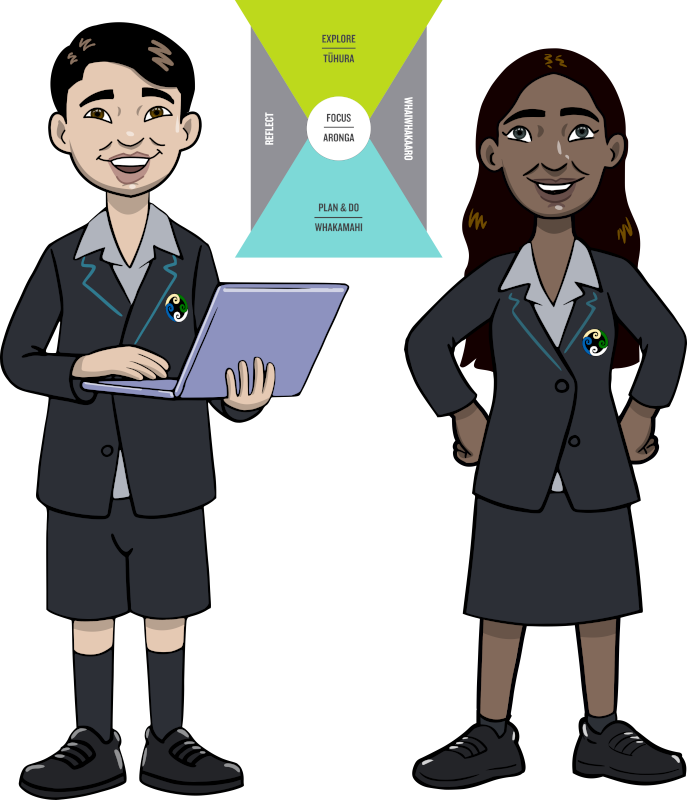
Ako: Digital Literacy
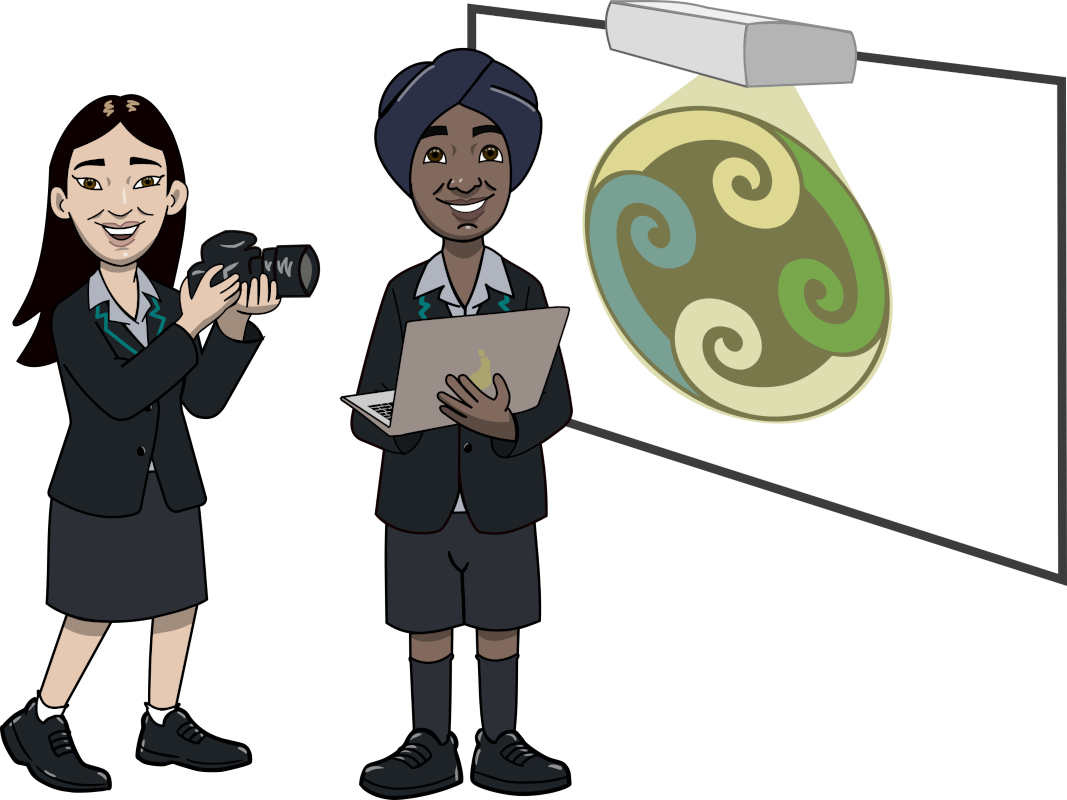
This week we're diving into the world of journalism! We'll be exploring the structure of a newspaper article and discovering what makes a headline truly hīkaka (eye-catching). We'll also be thinking about how to choose the perfect image to accompany our stories.
To bring this to life, we'll be focusing on writing a news article about a major event at the Olympics. Let's get ready to channel our inner reporters and create engaging stories!
Success Criteria:
- Whakamahia ngā āhuatanga o te tuhinga whaimana : I can identify and use appropriate language features for formal writing, such as formal greetings, polite tone, and correct punctuation.
- Whakahaeretia ngā whakaaro : I can structure my writing with a clear introduction, body, and conclusion.
- Whakamahia ngā hononga whakaaro : I can use linking words and phrases to connect ideas and create a logical flow.
- Whakaputahia ngā whakaaro mā te mārama : I can present my ideas clearly and concisely using appropriate language.
- Arotakehia te tuhinga : I can check my writing for spelling, grammar, and punctuation errors.
-
EXPLORE / TŪHURA learning intentions:
- We are EXPLORING the different formats and purposes of newspaper articles, formal letters, opinion articles, and interviews.
- We are EXPLORING how language features are used to achieve different purposes in these texts.
Wänanga: The 5 Cs
Wänanga: GREAT Ako

Ako: Digital Literacy

We are bringing our writing to life this week, we'll be focusing on writing a news article about a major event at the Olympics. Let's get ready to channel our inner reporters and create engaging stories!
Success Criteria:
- Whakamahia ngā āhuatanga o te tuhinga whaimana : I can identify and use appropriate language features for formal writing, such as formal greetings, polite tone, and correct punctuation.
- Whakahaeretia ngā whakaaro : I can structure my writing with a clear introduction, body, and conclusion.
- Whakamahia ngā hononga whakaaro : I can use linking words and phrases to connect ideas and create a logical flow.
- Whakaputahia ngā whakaaro mā te mārama : I can present my ideas clearly and concisely using appropriate language.
- Arotakehia te tuhinga : I can check my writing for spelling, grammar, and punctuation errors.
-
EXPLORE / TŪHURA learning intentions:
- We are EXPLORING the different formats and purposes of newspaper articles, formal letters, opinion articles, and interviews.
- We are EXPLORING how language features are used to achieve different purposes in these texts.
Wänanga: The 5 Cs
Wänanga: GREAT Ako

Ako: Digital Literacy

Kia ora whānau,
This week we're diving into the exciting world of journalism! We'll be putting the finishing touches on our newspaper articles. Remember to use the success criteria below as your guide to creating amazing stories. Let's work together to produce a fantastic newspaper!
Success Criteria:
- My article has a clear purpose and achieves its intended goal (e.g., to inform, entertain, persuade).
- My article presents information in a clear, concise, and engaging manner.
- I have included relevant details and examples to support my main points.
- I have structured my article logically with a clear beginning, middle, and end.
- I have used a variety of sentence structures to maintain reader interest.
- I have used accurate and appropriate vocabulary to convey my meaning.
- My writing is free from grammatical errors and spelling mistakes. I have used language that is suitable for my target audience.
- My article has a clear and engaging headline that accurately reflects the content.
- I have used paragraphs effectively to organise my information.
- My article has a strong conclusion that summarises the main points.
-
Kia ora whanau
This week we will work on completing our newspaper article and then begin our Film study on the movie "Race"
Learning Intentions:
- Students will explore the themes of racism, prejudice, and discrimination as depicted in the film.
- Students will develop critical thinking skills by analyzing the film's portrayal of historical events and characters.
- Students will demonstrate their understanding through various forms of creative expression by creating their own static image.
Success Criteria:
- Students can analyse the ways in which racism and discrimination are depicted in the film.
- Students can provide evidence from the film to support their analysis.
- Students can create a creative product (Static Image) that demonstrates their understanding of the film and its themes.
- Students can effectively communicate their ideas and findings to others.
-
We will continue on our learning journey with our Film Study.
Learning Intentions:
- Students will explore the themes of racism, prejudice, and discrimination as depicted in the film.
- Students will develop critical thinking skills by analyzing the film's portrayal of historical events and characters.
- Students will demonstrate their understanding through various forms of creative expression by creating their own static image.
Success Criteria:
- Students can analyse the ways in which racism and discrimination are depicted in the film.
- Students can provide evidence from the film to support their analysis.
- Students can create a creative product (Static Image) that demonstrates their understanding of the film and its themes.
- Students can effectively communicate their ideas and findings to others.
-
Enter text here...
FOCUS / ARONGA learning intentions:
- We are FOCUSING on what creates an effective Static Image.
Ako: Feedback

Wänanga: The 5 Cs
Enter text here...
Learning Intentions
- Students will be able to identify and describe static images in various forms.
- Students will be able to explain the characteristics of static images that distinguish them from other types of visual media.
- Students will be able to analyse the purpose and message of static images in different contexts- using the PAMM method.
Success Criteria
- Students can correctly identify examples of static images (e.g., posters, photographs, cartoons, book covers, word pictures, cards, junk mail).
- Students can accurately describe the characteristics of static images.
- Students can explain how static images are used to convey information, emotions, or ideas.
- Students can analyse the elements of a static image by using the PAMM method.
-
Kia ora everyone, this week we'll be tackling our first static image assessment. Let's use what we know about the PAMM method to plan our work.
All planning will be completed in class. This process is a part of the entire assessment process- it will be monitored before we move on to actually drafting the static image.
-
Kia ora whānau,
This week, we'll be transitioning to the drafting stage of our static image production. All work will be completed during class time.
Remember to revisit your planning sheets to ensure that your visual and verbal techniques are interconnected and support your overall message.
-
E hoa mā, tēnā koutou katoa.
Welcome back to our final term for the year! It's fantastic to see all your smiling faces again. As we embark on this last leg of our learning journey, our context will be based around Change makers-"How might we shift our mindset to position ourselves to lead with manaakitanga
This term, we'll be exploring how we can become kaiārahi (leaders) who whakawhanake (develop) a ngākau atawhai (compassionate heart). We'll learn about the power of whakaute (respect), tōrangapu (leadership), and whakaaro nui (big thinking) to create positive change in our communities.
Let's work together to whakamua (advance) our understanding of manaakitanga and become kaiārahi who inspire others to make a difference.
Kia ora, kia kaha, kia maia!
Mrs Naidoo -
Learning Intentions
- Understand the historical context of the refugee crisis.
- Analyse the characters' experiences and motivations.
- Evaluate the impact of war and displacement on individuals and families.
- Explore themes of hope, resilience, and the human spirit.
- Connect the novel to current events and global issues.
Success Criteria:
- Evaluate the author's use of multiple perspectives and storytelling techniques.
- Summarise the plot and key events of the novel.
- Understand the challenges faced by refugees and displaced persons.
- Appreciate the power of literature to promote understanding and tolerance.
- Reflect on the importance of human rights and social justice.
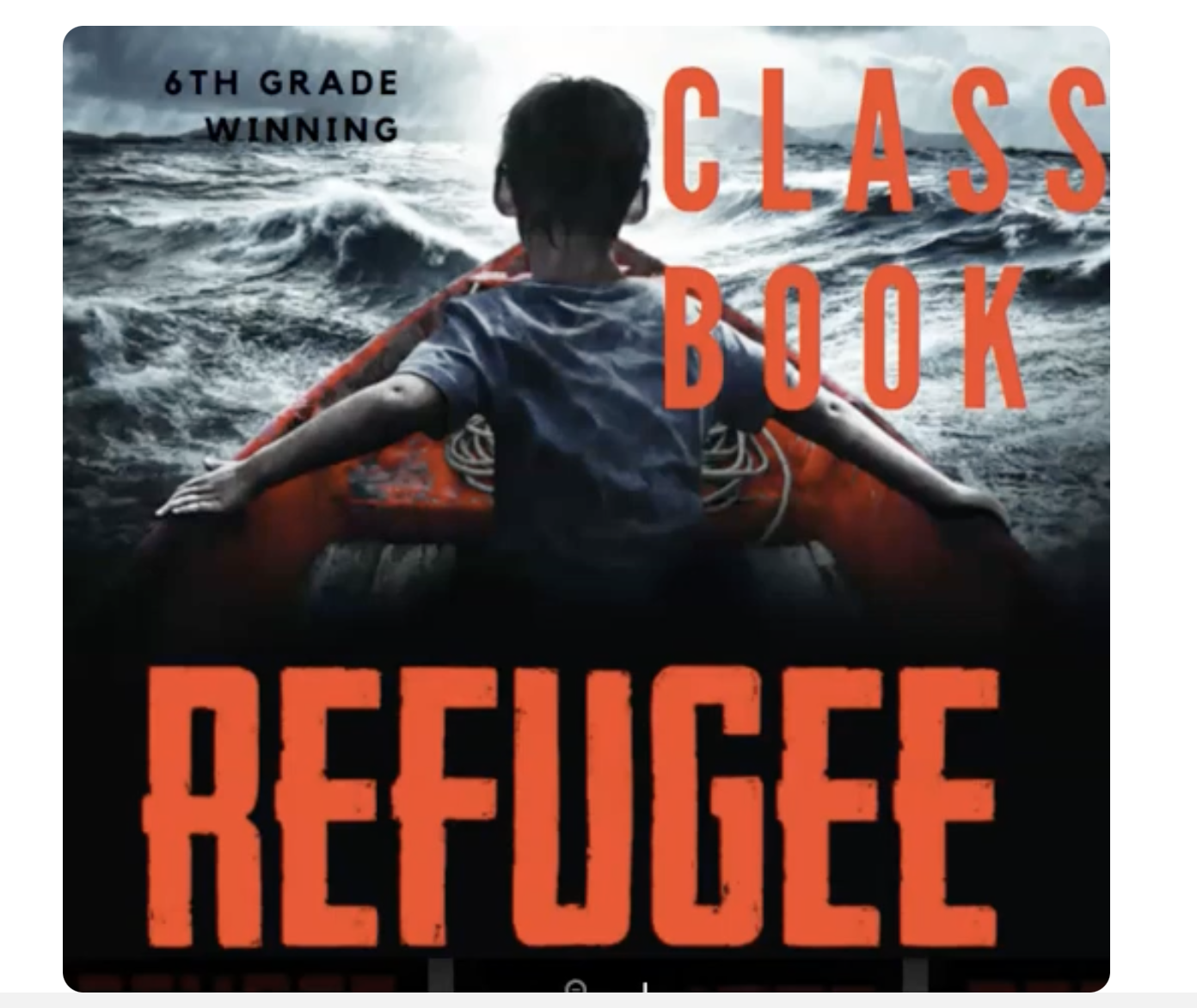
-
Enter text here...
EXPLORE / TŪHURA learning intentions:
- We are EXPLORING Connections the novel has to our personal experiences and current events
- We are EXPLORING how to Compare and contrast the plot structures of different literary works.
- We are EXPLORING the role of plot structure in storytelling.
Awhinatanga: Resilient Mindset
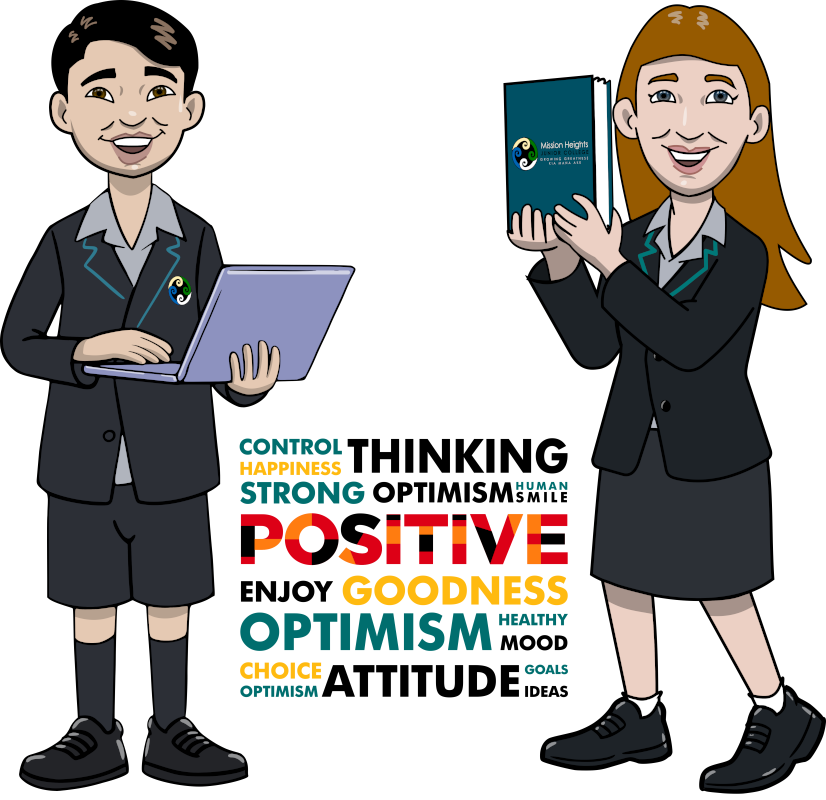
Awhinatanga: Culturally Connected
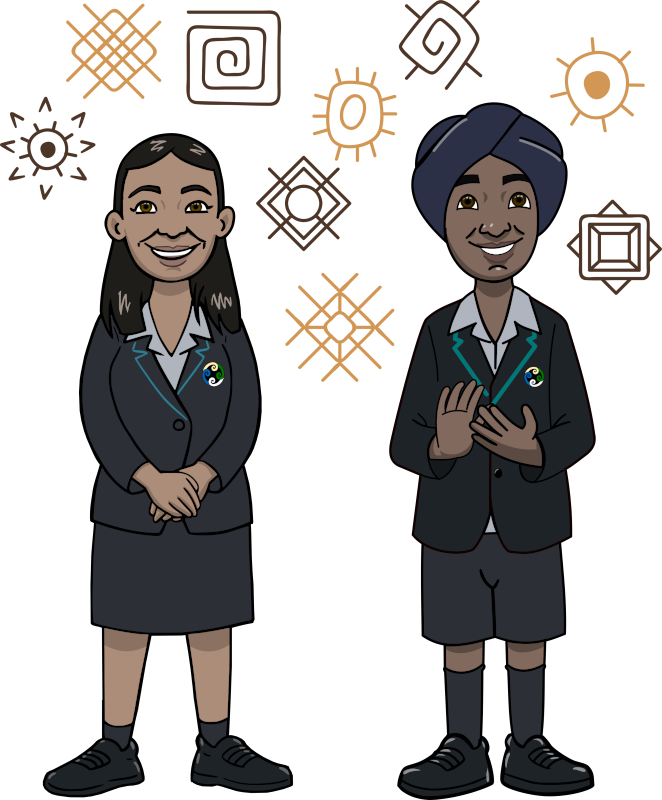
Wänanga: GREAT Ako

Enter text here...
Learning Intentions
- Understand the historical context of the refugee crisis.
- Analyse the characters' experiences and motivations.
- Evaluate the impact of war and displacement on individuals and families.
- Explore themes of hope, resilience, and the human spirit.
- Connect the novel to current events and global issues.
Success Criteria:
- Evaluate the author's use of multiple perspectives and storytelling techniques.
- Summarise the plot and key events of the novel.
- Understand the challenges faced by refugees and displaced persons.
- Appreciate the power of literature to promote understanding and tolerance.
- Reflect on the importance of human rights and social justice.
We will be moving on to chapter 17 to 21 this week. -
Kia ora whanau
This week we will be using some of our lessons to practice and maintain time management for our upcoming CAT's.
We will have some prompts to use in class and gather feedback on these from our peers and teacher.
-
Kia ora whanau
This week we will be using some of our lessons to practice and maintain time management for our upcoming CAT's.
We will have some prompts to use in class and gather feedback on these from our peers and teacher.
-
This week we will be writing our CAT assessments.
-
Enter text here...
EXPLORE / TŪHURA learning intentions:
- We are EXPLORING Connections the novel has to our personal experiences and current events
- We are EXPLORING how to Compare and contrast the plot structures of different literary works.
- We are EXPLORING the role of plot structure in storytelling.
Awhinatanga: Resilient Mindset

Awhinatanga: Culturally Connected

Wänanga: GREAT Ako

Enter text here...
Learning Intentions
- Understand the historical context of the refugee crisis.
- Analyse the characters' experiences and motivations.
- Evaluate the impact of war and displacement on individuals and families.
- Explore themes of hope, resilience, and the human spirit.
- Connect the novel to current events and global issues.
Success Criteria:
- Evaluate the author's use of multiple perspectives and storytelling techniques.
- Summarise the plot and key events of the novel.
- Understand the challenges faced by refugees and displaced persons.
- Appreciate the power of literature to promote understanding and tolerance.
- Reflect on the importance of human rights and social justice.
We will be moving on to chapter 36 this week.
